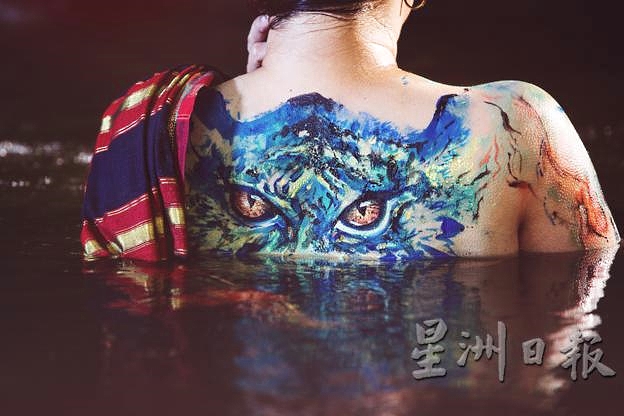
Reported by Peh Hui Kee / Pictures by Soh Shi Chee
Sin Chew Daily — Someone started the "Thaipusam Spraying Group" Facebook page in conjunction with the Thaipusam celebration in 2017, with the cover picture being the back profile of several women in colourful sarees and a description "Advance warning to Hindu female patrons coming to Thaipusam festival, beware of being sprayed with aerosol paint if found inappropriately dressed".
The call won the support of quite a lot of Indian Facebook users, and subsequently gave rise to artist Ruby Subramaniam's first body painting project "This Body Is Mine".

“Since they want to spray me, better let me do it myself. It will be much more awesome!”
Ruby brought in some classical Indian dancers and turned them into Hindu goddesses. She wanted the men to see how the goddesses they respect and fear walk around the streets of Kuala Lumpur.
To Ruby, there was huge problem with that Facebook call, which was more of a threat that violated a woman's privacy. Moreover, who should define whether a woman is appropriately dressed, and talking about culture and history, saree was introduced into India by the British only about one or two hundred years ago and is not strictly an Indian tradition.
Ruby said her grandmother did not wear a saree overcoat. Of course, she didn't mean that Indian women should only put on saree without the overcoat, but that women should be given the right to decide how they want to be dressed.
Body painting in resisting sex discrimination

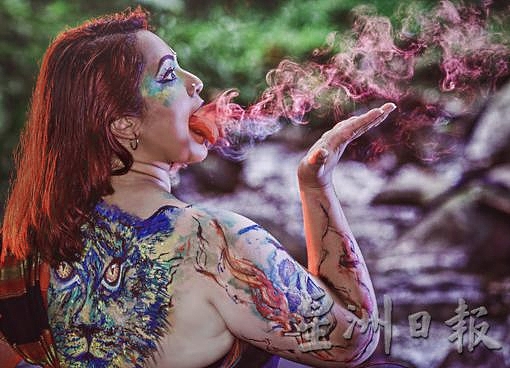
Ruby has opted to use body painting to resist sex discrimination.
"This is because our body itself is full of power. I'm not painting the story I want to relate, but also the stories of the dancers whose bodies I paint on."
Dancer Harshini Devi Retna was painted by Ruby into Lakshmi, the ancient goddess of prosperity, good fortune, and beauty, wearing a red colour saree and her arms painted with lotus flowers. Lakshmi is normally seated on the lotus pedestal and is accompanied by elephants and an owl, symbolising the quest for truth and knowledge in darkness.
"Actually Harshini's dancing teacher and producer have never actually let her perform as a goddess because they belileve that goddesses should not have dark complexion."
Another much feared Hindu goddess is the ferocious Kali who sticks out a red colour tongue and has a necklace of human skulls.
"If you go to a temple and look at her picture, you will see that she is actually wearing only something like a bikini. Are you (Indian men who threaten to spray inappropriately dressed women) going to arrest her?"
She cannot understand why men worship these powerful goddesses in the temple but show no respect for women in real life.
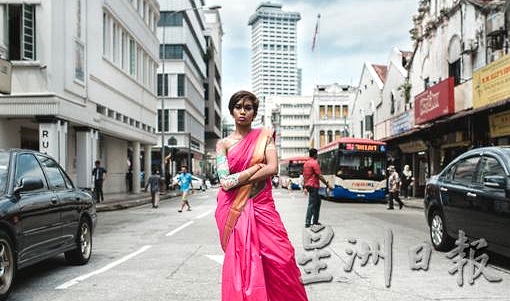
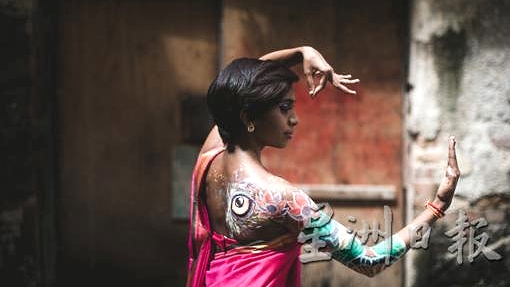
Nalina Nair, a Chinese-Indian political worker who is slightly plump, was painted into Goddess Kali.
"Some political workers think that I publish the half nude pictures of her just to convey my own political views, but Nalina told me those guys would not understand us and that we should take more of such pictures."
Ruby feels that Nalina can truly signify Goddess Kali's power.
"This happened just before the general elections and the whole political emphasis was on 'change', and Goddess Kali signifies destruction and rebirth."
Inspiration from own experience of discrimination
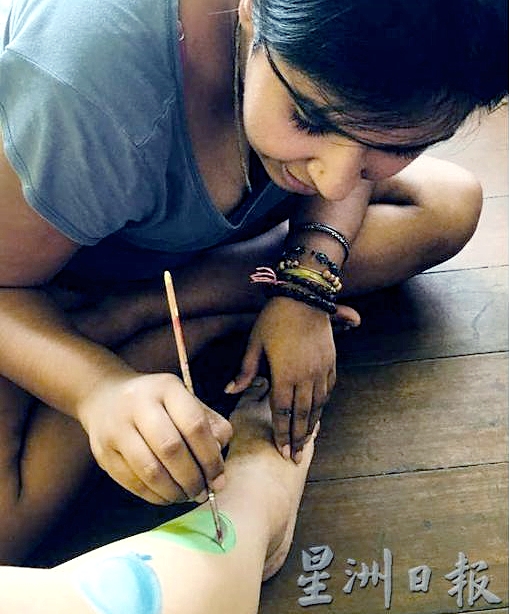
Ruby's body painting works constitute a form of protest not only against sex discrimination but also discrimination in skin colour, body shape, political views and intercommunity conflicts.
Her tremendous concern about such things to a very large extent stems from her own upbringing and workplace experiences. As both an Indian and a woman, she is constantly confronting all sorts of discrimination, and has seen a whole lot of differences among the people.
The caste system is still very much prevalent in the Indian society, and Ruby's parents are from different castes unacceptable to their respective families.
Ruby's mother is from a more Westernised, higher caste Sri Lankan family while her father is from a southern Indian family of rubber tappers.
Ruby grew up in an English-speaking environment and since young she was instilled with the thinking of getting a five-to-nine job, preferably in the civil service. Her childhood days were spent mostly on her mother's side of family and had not much understanding of her father's family until she went into serial photography and explored the relationship between rubber plantations and the Indian community of Malaysia, which prompted her to find out more about her father's family.
"During Thaipusam, all that we do on my mother's side is watching TV, but it is a hive of activity on my father's side as everyone is busy with something and there is a very strong festive atmosphere there."
Ruby admits that sex discrimination is very much present in the Indian society. For example in Brickfields, people will say you have forgotten your traditional culture if you are dressed a little more modern. However, if you wear a traditional saree in Bangsar, people will look at you like an alien.”
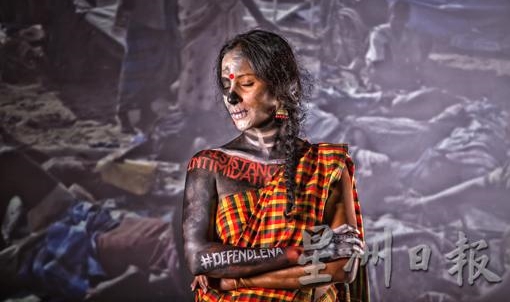
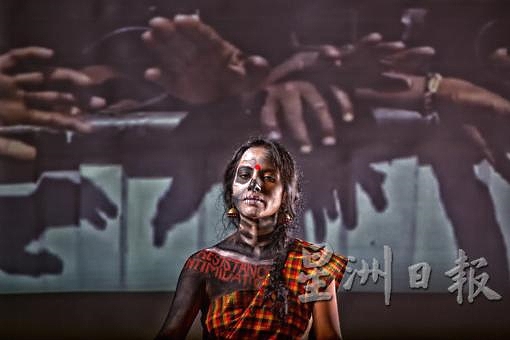
There was a time a colleague posted in the WhatsApp group a selfie with monkeys, alongside another picture of a group of Indian girls taking a selfie.
"I was very furious and protested to them, but they just said, 'but Ruby, you're pretty right?'
"They never realised that it was a discrimination."
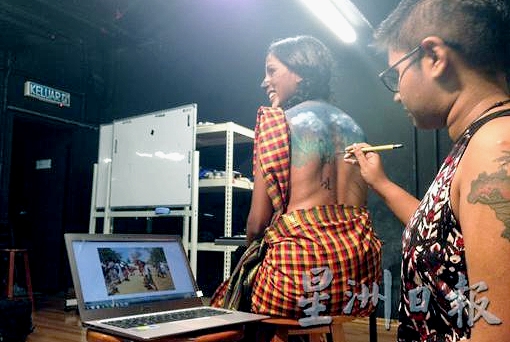

Body painting is one of the ways to express her feelings of frustration.
"This Body is Mine" project has drawn overwhelming feedback as well as international attention. This year, Ruby is embarking on another body painting project "Antidote".
She has managed to get a suburban house, and spends 30 days listening to one woman's story each day in order to draw the inspiration which she will then paint on the bodies of her subjects. Some of them have been divorced, some with relatively large body build and some having the painful experiences of sexual abuse.
"They come early in the morning, and I'll start listening to their stories and ask them some very personal questions while taking care of their feelings with the hope they will leave in relief at the end of the day."

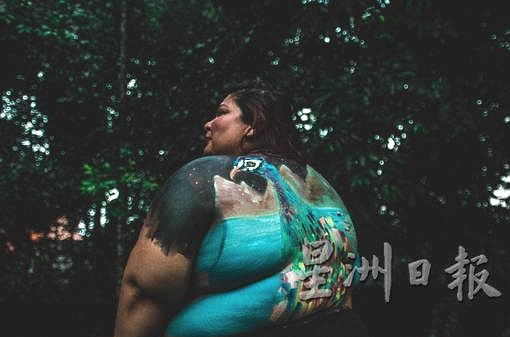
"Rise from the Ashes" is Ruby's work for the #DefendLena campaign.
In 2013, KOMAS community communication centre screened a film called No Fire Zone: The Killing Fields of Sri Lanka at KL-Selangor Chinese Assembly Hall about a no-fire zone set up by the Sri Lankan government to exterminate the Tamil rebels during the country's civil war.
The Sri Lankan high commission requested to cancel the screening on the eve of the event. The police subsequently arrived, questioned and arrested the centre's programme coordinator Lena Hendry. In 2017, she was fined RM10,000 under the Film Censorship Act 2002.
To show solidarity with Lena Hendry, Ruby painted a skulls on Indrani Kopal and posed in front of the screen during the screening of No Fire Zone.
ADVERTISEMENT
ADVERTISEMENT


































